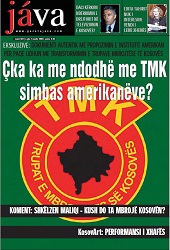
WEEK - Issue 024. Thursday 7 November 2002
JÁVA - Numri 024. E ejte 7 Nandor 2002
Keywords: Kosovo 2002; Kosovo Army; Kosovo Media;
More...
Keywords: Kosovo 2002; Kosovo Army; Kosovo Media;
More...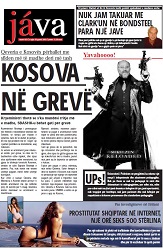
Keywords: Kosovo 2003;
More...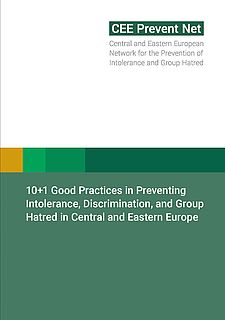
This compendium was created by the consortium members of the CEE Prevent Net initiative. Its development is the result of a robust exchange of good practice methods among various organizations and civil society actors in the areas of youth work and (non-formal) education aimed at preventing intolerance, discrimination, and right-wing populism and extremism in the region of Central and Eastern Europe. Initially, this volume was supposed to present 10 good practices for working with young people directly; however, the CEE Prevent Net network decided to expand this initial enterprise gratuitously. This additional section provides youth workers, educators, and other civic actors with recommendations and advocacy strategies for youth work that fosters tolerance, facilitates dialogue, and prevents discrimination and far right ideologies.
More...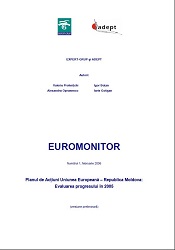
Keywords: Democratic institutions; Transnistria conflict; capacity of administration; juridical system; economic reforms; foreign trade; social development; human traffic; migration; border control;
The reports in the "Euromonitor" series aim at independent and objective monitoring of the implementation process of the Republic of Moldova - European Union Action Plan. The actions adopted and implemented by both signatories of the Plan will be monitored quarterly. The action plan is a complex document, structured in 7 chapters, which provides for the implementation of about 300 actions, some defined more or less precisely, others very ambiguous. Unable to monitor such a complex document, the authors of "Euromonitor" focused on priority actions, identified in the Action Plan itself.
More...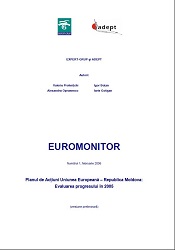
Keywords: Democratic institutions; Transnistria conflict; capacity of administration; juridical system; economic reforms; foreign trade; social development; human traffic; migration; border control;
The reports in the "Euromonitor" series aim at independent and objective monitoring of the implementation process of the Republic of Moldova - European Union Action Plan. The actions adopted and implemented by both signatories of the Plan will be monitored quarterly. The action plan is a complex document, structured in 7 chapters, which provides for the implementation of about 300 actions, some defined more or less precisely, others very ambiguous. Unable to monitor such a complex document, the authors of "Euromonitor" focused on priority actions, identified in the Action Plan itself.
More...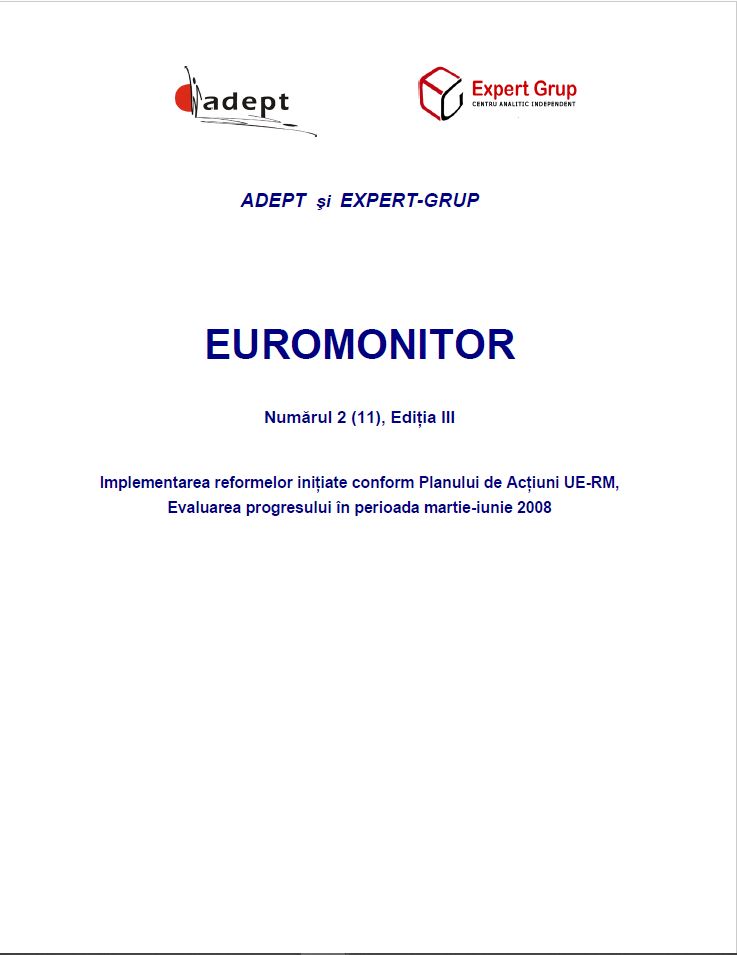
Keywords: Democratic institutions; Transnistria conflict; capacity of administration; juridical system; economic reforms; foreign trade; social development; human traffic; migration; border control;
The reports in the "Euromonitor" series aim at independent and objective monitoring of the implementation process of the Republic of Moldova - European Union Action Plan. The actions adopted and implemented by both signatories of the Plan will be monitored quarterly. The action plan is a complex document, structured in 7 chapters, which provides for the implementation of about 300 actions, some defined more or less precisely, others very ambiguous. Unable to monitor such a complex document, the authors of "Euromonitor" focused on priority actions, identified in the Action Plan itself.
More...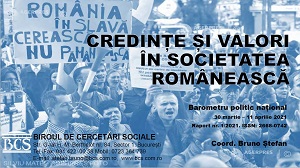
Keywords: ”religious beliefs”;”political values”;”voting intentions”;”trust in political leaders”;
The survey was conducted between March 30 and April 11, 2021 on a national sample of 1420 subjects. He measured the state of religiosity of the citizens with the help of several indicators: faith in God, frequency of prayers, church, fasting, confession, observance of holidays, reading the Bible, etc. The survey also measured attitudes toward teaching religion in schools, same-sex marriages, faith in the horoscope, trust in priests, attitudes toward abortion, the pandemic, politicians, and voting intentions.
More...
Keywords: festival;catalogue;film;
More...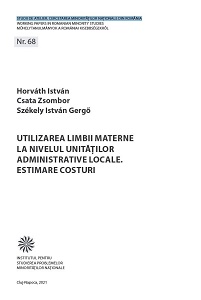
The study aims to operationalize and estimate the costs of implementing the rights of citizens belonging to a national minority to use their mother tongue in public administration. Identifies the areas of activity in which these obligations are generated, the forms of institutional organization through which the local administrative units manage them, the approximate volume of situations managed and the approximate additional costs compared to the situation where the local administration would use only the state language. The study is based on fieldwork that took place between July and October 2019, in which we used a complex survey tool and conducted interviews with local council representatives belonging to localities where the proportion of Hungarian residents exceeds 20%. The results show that the implementation of bilingual communication in local and county administrations involves significant costs, so - at least from the perspective of distributive justice - it is unfair for these costs to be borne exclusively by local governments.
More...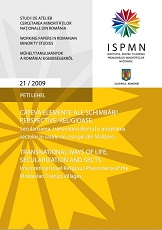
Keywords: Transnational Ways of Life; Secularization; Religious Phenomena; Moldova; Csángó Villages; Tradition;
The paper aims to describe phenomena of modernization in Moldavian Csango villages in the context of religiosity. It interprets the most significant shifts in the life forms and traditional religiosity, the change of central values, tendencies of secularization and the emergence of sectarianism. The author argues that the religious experience gradually evades community and (Church) legitimation, so that the ever-larger individualization of religious experiences and conceptualization leads to the pluralization of worldviews. The impersonalization of social control, the changing norms that affect everyday life, the role change of religious values, the individualization of communities, basically the transforming forces of modernization on society disable the catholic church to fully integrate the Csango village population, who in rising numbers attend new teachings that offer an updated worldview, as well as a brand new set of community/religious norms. The author argues, that sectarianism/sectarianization is a part of modernizational strategies, and that as a consequence of transnational life forms, sects have become part of social mobility.
More...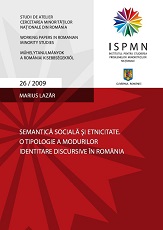
Keywords: Romania; ethnic relations; interethnic climate of Romania; Romanians; Hungarians; Roma population;
The present study redraws the map of ethnic relations in Romania on the basis of sociological surveys carried out by the Reseach Center on Inter-ethnic Relations (Centrul de Cercetare a Relaţiilor Interetnice,CCRIT) and by the Ethnocultural Diversity Resource Center (Centrul de Resurse pentru Diversitate Etnoculturală), together with the Metro Media Transilvania Institute and the Romanian Institute for Research on National Minorities (Institutul pentru Studierea Problemelor Minorităţilor Naţionale, ISPMN). The author participated in all of these surveys as either research coordinator or as a consultant; and although the aforementioned surveys had different objectives and were carried out in different contexts, they had a common denominator, i.e. they examined the interethnic climate in Romania by taking the mirror-images which the main ethnic groups (Romanians, Hungarians and the Roma) had about one another. Going beyond the descriptive level that was typical of the first attempts synthesizing the collected data, the study intends to synthesize the main attitudes and orientations of the population from Romania on the basis of ideal-typical attitudes and discourses corresponding with certain social segments. The study incorporates the longitudinal data which enable a unitary approach based on continuity, and record essential and relevant aspects for positioning the subjects in the field of inter-ethnicity.
More...
Keywords: Obligatory work; Jews in Romania and Hungary; World War II; Labor service;
This paper proposes to compare the ideological and legal frameworks of the Romanian and Hungarian Jewish labor service system. The analysis brings into focus Transylvania, a territory which was divided between Hungary and Romania in the time of the Second World War. Between 1940-1944 the northern part of Transylvania was part of Hungary, while the southern territories belonged to Romania. This territory split in two had a Jewish population with common characteristics like their Hungarian language and culture and their socio-cultural background. However, their fate in the time of the Holocaust were totally different.
More...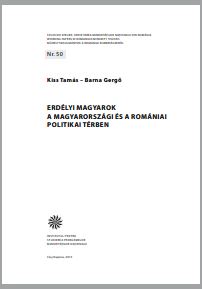
Keywords: Transylvanian Hungarians; political behaviour; Ethnic parties; National minorities; Hungary and Romania; voting behaviour;
Between 18 May and 8 June, 2013 the authors have collected data from a representative sample of 1,232 Hungarians from Transylvania with the purpose to examine the political behaviour of the aforementioned community within the political spaces of both Hungary and Romania. While closely related to a research project (entitled 'Ethnic parties, voting behaviour') carried out within the Romanian Institute for Research on National Minorities, the present research has extended its focus to Transylvanian Hungarians' voting behaviour outside Romania. This change of perspective has been necessary because on 26 May 2010 the Hungarian Parliament adopted the amendment to the 1993 Law on Hungarian citizenship by introducing the simplified naturalization procedure, thus enabling Hungarians from the neighbouring countries of Hungary to obtain Hungarian citizenship without residency. Moreover, the new Hungarian election law adopted in November 2011 allows Hungarian citizens without residency in Hungary to vote in the Hungarian Parliamentary elections (on candidates from national party lists). As a consequence, the political, or voting behaviour of Hungarians from Transylvania needs to be analyzed by taking into account this perspective as well.
More...
Keywords: Ethnocultural Diversity; Administrative-Territorial Organization; Romania; Economic homogenity; transport;
Public debates on the regional dimension of societal organization are plagued by a series of stereotypes originating in the lack of adequate knowledge about this phenomenon. Precisely because of this, the aim of this study is to present in a systematic and analytic manner the theoretical concepts, working methods and their possibilities of application in solving some technical aspects related to the efficient management of territory and the related issue of great actual relevance in Romania, the organization of development regions. We do not intend to elaborate an optimal solution to the problem, as we believe that no such recipe exists; conversely, we wish to contribute to the debate by sketching a number of scientifically grounded alternative proposals, the effective realization of which depends on the actual political context. While the material may seem too technical and difficult to digest without a solid background in the field, the specialized language was needed in order to meet certain requirements of scientific analysis.
More...
Keywords: Hungarians from Transylvania; Hungarian and Romanian political space; citizenship; Hungarian parliamentary elections; European Union;
Between 18 May and 8 June, 2013 the authors have collected data from a representative sample of 1,232 Hungarians from Transylvania with the purpose to examine the political behavior of the aforementioned community within the political spaces of both Hungary and Romania. While closely related to a research project (entitled 'Ethnic parties, voting behavior') carried out within the Romanian Institute for Research on National Minorities, the present research has extended its focus to Transylvanian Hungarians'voting behavior outside Romania. This change of perspective has been necessary because on 26 May 2010 the Hungarian Parliament adopted the amendment to the 1993 Law on Hungarian citizenship by introducing the simplified naturalization procedure, thus enabling Hungarians from the neighboring countries of Hungary to obtain Hungarian citizenship without residency. Moreover, the new Hungarian election law adopted in November 2011 allows Hungarian citizens without residency in Hungary to vote in the Hungarian Parliamentary elections (on candidates from national party lists). As a consequence, the political, or voting behavior of Hungarians from Transylvania needs to be analyzed by taking into account this perspective as well.
More...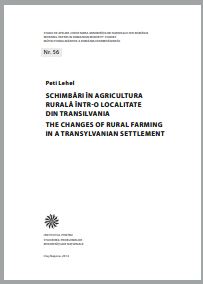
Keywords: Rural farming; Transylvanian settlement; Pluriactivity and diversification; Agricultural activities; Small farms; Sheep farms;
The article analyzes the changes occurred in a Transylvanian village farming. First part of the paper focuses on the economic and social frameworks and context of the rural farming. The main part of the analysis based on the theoretical concepts of pluriactivity, diversification and food self-provisioning and the conceptualization of the special literature analyzes the economic strategies of a Romanian village, seeking to present a typology based on nature of economic strategies. The author argues that the main strategy is pluriactivity, however the limited forms of diversification are also present in the farming patterns of the village, which mark a shift toward a more specialized, profit-oriented farming. Near this strategies the food self-provisioning is also present, what is more there has appeared new ideologies and meanings regarding to food very well known mostly from the western countries' alternative food networks.
More...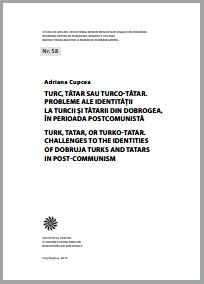
Keywords: Subsistence strategies; Economic and social changes; social stratifications; Farms; Horticultures; Day-labourers; Quasi-agricultural enterprise experiments;
The study attempts to present the economic strategies of a settlement, in which employment in state companies built upon a specific environmental resource (natural gas extraction) as well as the success of an independent enterprise has significantly transformed the livelihood strategies based on agriculture, resulting in a change in lifestyle as well. The studied settlement represents the opposite model of the villages re-peasantised after the regime change, described in the Transylvanian scholarly literature. The study analyses the economic behaviour modes, as well as the changes in the livelihood strategies observed in a settlement along the Kis-Küküllő (Târnava Mică) River, aiming to present the stratification of the rural society based on economic strategies. The author outlines the way in which in this multiethnic (inhabited by Hungarians, Romanians and Romani) small settlement, the bakery which used to function as a cooperative during socialism became a well-established company employing a significant part of the village's population, being present in important segments of the national markets, connecting the previously isolated small settlement with new regional and national networks. He also presents the significance of the natural gas extraction activities from the point of view of livelihood strategies, after which he presents the economic strategies built upon agricultural activities.
More...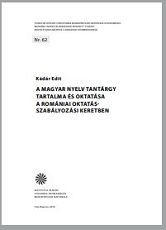
Keywords: Minorities; Romania; Ethno-Demographic process; population dynamics;
The study proposes to draw out the ethno-demographic portray of national minorities from Romania. The analysis has as a start point the statistic dates given by the National Institute of Statistics with which ISPMN concluded a unitive protocol. The dates used for the elaboration of this study can be grouped in two categories: 1. Census dates (between 1930 and 2011) and 2. dates which come from the population dynamics (1994-2011). As concerning the analyzed minorities, it started from the structure of parliamentary representation of the minorities from Romania.
More...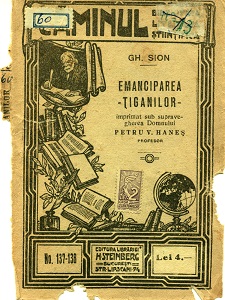
In the 5th secondary class, memoir readings are required, in connection with the special study of this literary species. In Romanian literature, there are few such productions. Among them, the most attractive are Gh. Sion's. This writer is distinguished by a special storytelling talent. His volume "Suvenire contemporane" deserves all our attention. From it we reproduce here the chapter "Emancipation of the Gypsies", an interesting story and a successful characterization, at the same time, of Romanian society in the first half of the XlXth century.
More...
Keywords: Taxes and fees; fiscal controls; fiscal facilities; single VAT rate; public administration.
The paper presents the results of a sociological research carried out in Romania on a national sample of 1,104 subjects. The data was collected between 9-14 June 2022, and the research was funded by the Tax Pact. The paper presents data on Romanians' preferences for a stable tax code, for merging some taxes and simplifying tax legislation, for certain legislative measures and proposals for the economic recovery of the country, about the progressive tax and about the perception of fiscal administrations.
More...